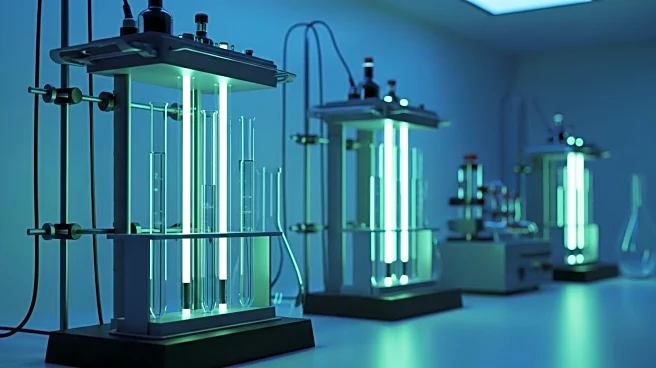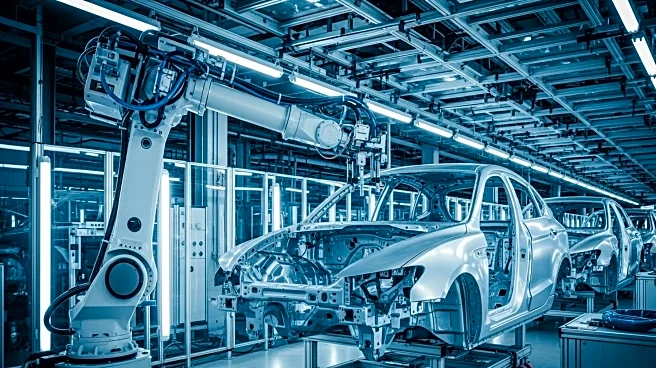What is the story about?
What's Happening?
The U.S. is witnessing a significant shift towards lab-grown products across various sectors, including food, jewelry, and medical technology. This transformation is marked by the increasing acceptance of lab-grown diamonds, which by 2024 accounted for 45% of engagement rings in the U.S., a substantial rise from nearly zero a decade earlier. Additionally, advancements in biotechnology have led to the development of lab-grown food products, such as steaks and cheese, created from cultured cells and proteins. These innovations are not limited to consumer goods; they extend to medical applications, with breakthroughs like 3D bioprinting of human skin for grafts, offering new solutions for medical treatments. Despite initial skepticism and backlash, these lab-grown products are gaining traction, reflecting a broader acceptance of engineered solutions in everyday life.
Why It's Important?
The growing prevalence of lab-grown products in the U.S. signifies a shift in consumer preferences and technological capabilities. This trend has the potential to reshape industries by offering sustainable and ethical alternatives to traditional methods. For instance, lab-grown diamonds reduce the environmental and ethical concerns associated with mining, while lab-grown food products can address food security and environmental impact issues. The medical field benefits from personalized treatments, such as custom-printed skin grafts, enhancing patient outcomes. As these technologies become more mainstream, they could lead to significant economic growth and innovation, positioning the U.S. as a leader in biotechnology and sustainable practices. However, this shift also challenges traditional industries and raises questions about regulatory frameworks and consumer acceptance.
What's Next?
As lab-grown products continue to gain popularity, further advancements and innovations are expected in biotechnology and consumer goods. Companies and researchers are likely to explore new applications and improve existing technologies, potentially leading to more affordable and accessible products. Regulatory bodies may need to adapt to ensure safety and ethical standards are maintained. Consumer education and marketing will play crucial roles in overcoming skepticism and promoting the benefits of lab-grown products. Stakeholders, including businesses, policymakers, and consumers, will need to navigate the balance between innovation and tradition, shaping the future landscape of various industries.
Beyond the Headlines
The rise of lab-grown products also prompts ethical and cultural considerations. As society becomes more accustomed to engineered solutions, questions about authenticity, value, and the definition of 'natural' arise. This shift may influence cultural perceptions and consumer identities, as people reconcile traditional values with modern innovations. Additionally, the environmental impact of lab-grown products, while generally positive, requires ongoing assessment to ensure sustainable practices. The integration of these technologies into daily life could lead to long-term changes in societal norms and expectations, challenging conventional notions of production and consumption.
AI Generated Content
Do you find this article useful?















